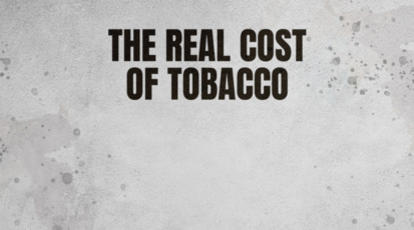-
Scary Enough
-
There's no safe tobacco, but what counts as tobacco?
-
-
Scary Enough

Food and Drug Administration (FDA). Harmful and potentially harmful constituents in tobacco products and tobacco smoke: established list. Federal Register. 2012; 77(64): 20034-20037.
U.S. Department of Health and Human Services (USDHHS). The Health Consequences of Smoking: Nicotine Addiction. A Report of the Surgeon General. Atlanta, GA: U.S. Department of Health and Human Services, Centers for Disease Control and Prevention, National Center for Chronic Disease Prevention and Health Promotion, Office on Smoking and Health; 1988.
U.S. Department of Health and Human Services (USDHHS). How Tobacco Smoke Causes Disease. The Biology and Behavioral Basis for Smoking-Attributable Disease (Executive Summary). Atlanta, GA: U.S. Department of Health and Human Services, Centers for Disease Control and Prevention, National Center for Chronic Disease Prevention and Health Promotion, Office on Smoking and Health; 2010.
U.S. Department of Health and Human Services (USDHHS). The Health Consequences of Smoking - 50 Years of Progress. A Report of the Surgeon General. Atlanta, GA: U.S. Department of Health and Human Services, Centers for Disease Control and Prevention, National Center for Chronic Disease Prevention and Health Promotion, Office on Smoking and Health; 2014.
Food and Drug Administration (FDA). Harmful and potentially harmful constituents in tobacco products and tobacco smoke: established list. Silver Spring, MD: Federal Register; 2012. 77(64). https://www.gpo.gov/fdsys/pkg/FR-2012-04-03/pdf/2012-7766.pdf. Accessed August 21, 2017.